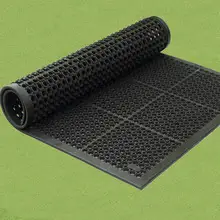| Sign In | Join Free | My benadorassociates.com |
|
| Sign In | Join Free | My benadorassociates.com |
|
| Categories | Rubber Vulcanizing Press Machine |
|---|---|
| Brand Name: | Beishun |
| Model Number: | XLP-700 |
| Certification: | ISO/CE |
| Place of Origin: | Qingdao |
| MOQ: | 1set |
| Price: | Negotiable |
| Payment Terms: | T/T,L/C |
| Supply Ability: | 30sets |
| Delivery Time: | 40day |
| Packaging Details: | Wooden box/20GP/40GP |
| Power: | 7.5-75KW |
| Main Motor Power: | 11 kw |
| Customized Services: | Support Customization |
| Heating Method: | Electric Heating |
| Voltage: | 220V/380V |
| Heating Plate Size: | 1300*1300mm |
| Condition: | New |
| Specification: | Customized |
| Platen Daylight: | 300mm |
| Driving Motor: | 2.2kw * 2 |
| Usage: | Rubber Tread product making |
| Number Of Layers: | one layers |
| Model: | XLP-700 |
| Company Info. |
| Qingdao Beishun Environmental Protection Technology Co.,Ltd |
| Verified Supplier |
| View Contact Details |
| Product List |
The working principle of the vulcanizing machine:
A vulcanizing machine is a mechanical equipment used for processing
rubber products. Its function is to heat rubber products to a
certain temperature and, through vulcanization reactions, endow
rubber with properties such as heat resistance, cold resistance,
and aging resistance. The working principle of the vulcanizing
machine mainly includes the following steps:
1. Heating: Heat the heating elements (such as electric heaters or
steam heaters) inside the vulcanizing machine to the set
temperature. The heating element can transfer heat to the
vulcanization molds and rubber products inside the vulcanizing
machine.
2. Vulcanization mold adjustment: According to the size and shape of
the rubber products, select the appropriate vulcanization mold and
fix it on the vulcanizing machine. Make sure that the vulcanization
mold can ensure that the rubber products are heated evenly during
the vulcanization process.
3. Installation of rubber products: Install the rubber products to
be vulcanized in the vulcanization mold. Ensure that the size and
shape of the rubber products match the vulcanization mold to ensure
consistency during the vulcanization process.
4. Pressurization: A certain pressure is applied to the vulcanization
mold by a hydraulic or pneumatic system to ensure that the rubber
products can fully contact the mold during the vulcanization
process and that the thickness change throughout the vulcanization
process is uniform.
5. Vulcanization: After the vulcanizing machine is heated to the set
temperature, the heating temperature is transferred to the
vulcanization mold and rubber products. Under certain temperature
and pressure, the vulcanizing agent in rubber begins to undergo
vulcanization reactions. Vulcanization reaction causes
cross-linking of rubber molecules, increasing the strength,
toughness and aging resistance of rubber products.
6. Cooling: After the vulcanization reaction, the vulcanization molds
and rubber products will be cooled. Cooling can be carried out with
water or a cooling system to lower the temperature of the
vulcanized products and make the vulcanization reaction more
stable.
7. Remove rubber products: After the vulcanizing machine has cooled
down, open the vulcanizing mold and remove the rubber products that
have been vulcanized.
Based on the above working principle, the vulcanizing machine can
perform high-temperature vulcanization on rubber products and endow
them with the required physical and chemical properties, making
them reliable and durable rubber products.
| Parameter | Specification | Remarks |
|---|---|---|
| Model | ASM-V500 | Customizable for mat size & texture |
| Vulcanization Method | Electric Heating / Steam / Oil Heating | Choice based on production scale |
| Max. Mat Size (L×W) | 500×500 mm (Standard) / Up to 1500×1500 mm | Custom molds available |
| Thickness Range | 2~30 mm | Adjustable pressure for even curing |
| Working Temperature | 140°C~180°C | PID-controlled (±1°C accuracy) |
| Heating Power | 25~50 kW (Electric) / 0.8~1.2 MPa (Steam) | Fast heating with ceramic plates |
| Pressure System | Hydraulic (15~25 MPa) | Ensures deep pattern imprint |
| Platen Size | 600×600 mm / 1200×1200 mm (Customizable) | For single or multi-cavity molds |
| Cycle Time | 3~8 minutes per mat | Depends on thickness & rubber compound |
| Surface Pattern | Diamond grip / Raised dots / Custom designs | Laser-engraved mold options |
| Cooling System | Water-cooled platens or forced air | Reduces demolding time |
| Automation Level | Manual / Semi-auto / Fully-auto (PLC + Robot) | Auto mat loading/unloading optional |
| Power Supply | 380V, 50Hz, 3-phase | CE/ISO certified |
| Production Capacity | 200~800 mats/day (Single shift) | Multi-platen setups increase outp |
✔ High-Pressure Molding – Sharp pattern definition for anti-slip
performance (tested to DIN 51130 R10~R13).
✔ Material Flexibility – Works with SBR, NBR, EPDM, Recycled
Rubber, and TPV compounds.
✔ Energy Saving – Insulated platens reduce heat loss by 30%.
✔ Quick Mold Change – Modular design for fast texture/pattern
swaps.
Industrial Flooring – Factory walkways, truck bed liners.
Marine & Pool Decks – Slip-resistant rubber mats.
Stair Treads – Vulcanized rubber with abrasive particles.
Gym & Playground Mats – Safety-certified textures.
In-Mold Labeling – Embed logos/warnings during vulcanization.
Automatic Compound Feeding – For multi-layer mats (e.g., colored top layer).
Post-Cure Oven Integration – For high-temperature resistance mats.
Post-Vulcanization Testing – Slip resistance (pendulum test), tensile strength, and tear resistance.
Real-Time Monitoring – Sensors track temperature/pressure curves for consistency.
Need specific certifications (e.g., OSHA, EN 1339) or a turnkey
production line? Provide:
① Desired mat dimensions/texture,
② Rubber material (e.g., 60 Shore A EPDM),
③ Target output (e.g., 10,000 mats/month).
Let me know if you require material compatibility data or safety
compliance details!


|